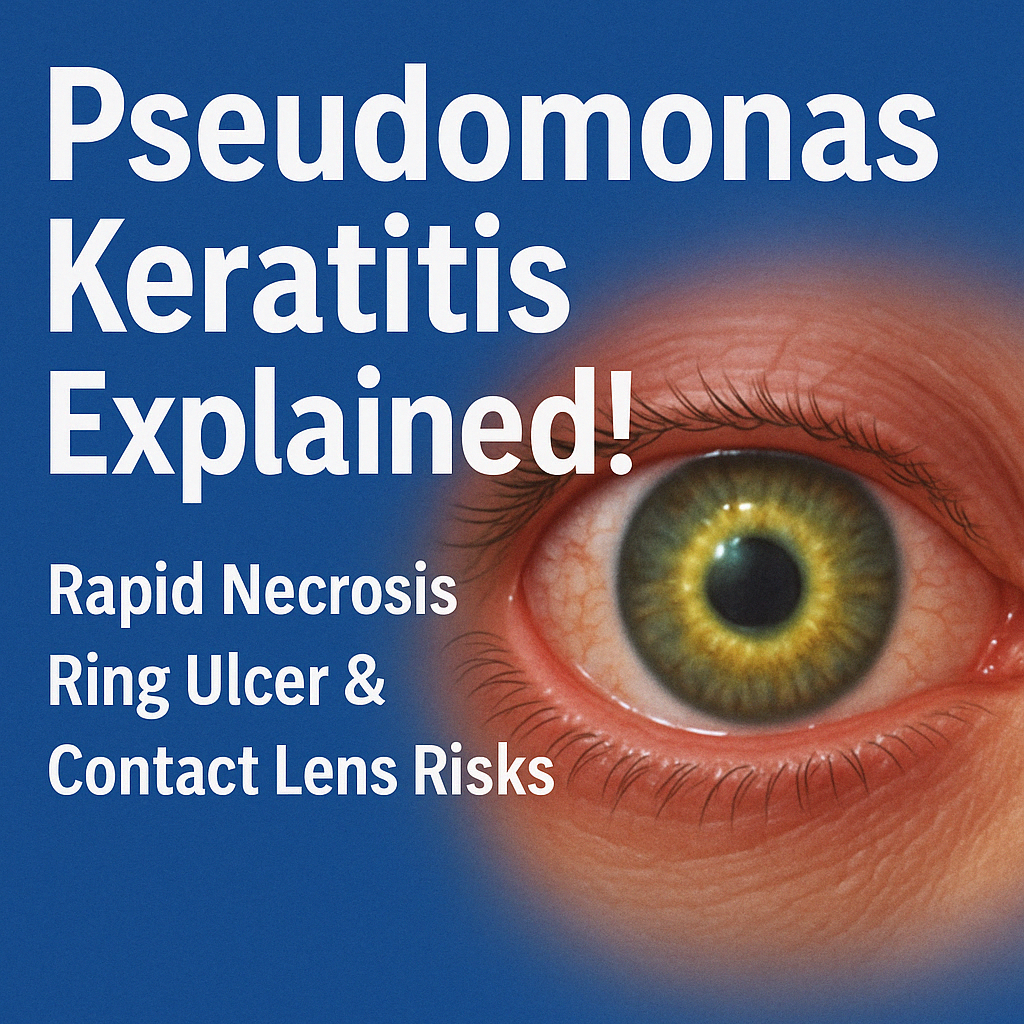Tistoryview
Disease&Treatment/Cornea&Ocular surfaces
Characteristics, clinical findings, progression pattern, and contact lens-related infection of bacterial keratitis caused by Pseudomonas aeruginosa
eye_doc 2025. 4. 21. 23:12Pseudomonas aeruginosa is the most common Gram-negative pathogen responsible for infectious keratitis, especially in contact lens wearers and immunocompromised patients.
Its rapid progression and necrotizing purulent infiltration make early diagnosis and aggressive treatment essential.
🔹 Clinical Features & Progression
- Rapidly progressing stromal melting, with purulent discharge
- May result in ring-shaped stromal infiltrates, Descemetocele, or corneal perforation
- Other pathogens showing similar features: S. pneumoniae, HSV, Acanthamoeba, etc.
🔹 CL-Related Infections
- Bacterial adhesion occurs regardless of contact lens material
- Biofilm formation increases resistance to antibiotics
- Infection can be mild (low virulence organisms) or severe (Pseudomonas)
📋 Pseudomonas Keratitis Summary Table (English)
CategoryKey Findings
| Infection Profile | Gram-negative / rapid onset / CL-associated |
| Hallmark Features | Stromal necrosis, mucopurulent discharge, ring infiltrates |
| Complications | Descemetocele, perforation, sclerokeratitis |
| Risk Factors | Contact lenses, immunocompromised, hospitalization, tropics |
| Differentials | S. pneumoniae, HSV, Acanthamoeba, Klebsiella |

